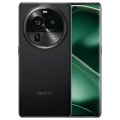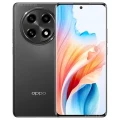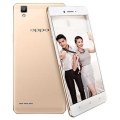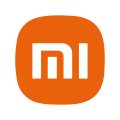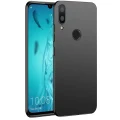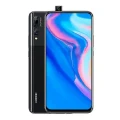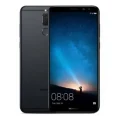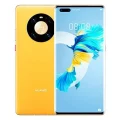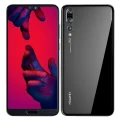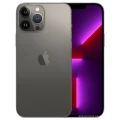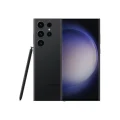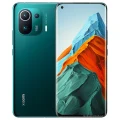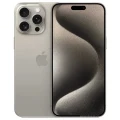Oppo A7
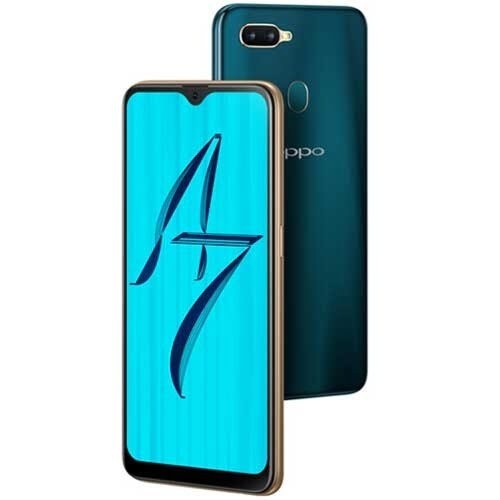


Oppo A7 Price in Bangladesh
Oppo A7 (3 GB) costs BDT 17,990 at this time, while Oppo A7 (4 GB) costs BDT 19,990. The Oppo A7 smartphone has an Octa-core, 1.8 GHz Qualcomm SDM450 Snapdragon 450 processor and a 6.2-inch IPS LCD capacitive touchscreen display. It includes 32 GB of internal storage that can be increased to 256 GB with external storage, and 3/4 GB of RAM. This fashionable gadget features two 13 MP, 2 MP, and a 16 MP camera on the front. A regular 4230 mAh Li-ion battery was used to power it.
Specifications
General
| Model | Oppo A7 |
| Announced | 27-11-2018 |
| Released | 27-11-2018 |
| Status | Available |
| Official price | (3GB+64GB) ৳17,990 / (4GB+64GB) ৳19,990 |
Design
| Dimensions | 155.9 x 75.4 x 8.1 mm (6.14 x 2.97 x 0.32 in) |
| Weight | 158 g (5.57 oz) |
| Colors |
Glaze Blue, Glaring Gold |
Network
| Technology | GSM / HSPA / LTE |
| 2G Network | GSM 850 / 900 / 1800 / 1900 - SIM 1 & SIM 2 |
| 3G Network | HSDPA 850 / 900 / 2100 |
| 4G Network |
LTE band 1(2100), 3(1800), 5(850), 7(2600), 8(900), 20(800), 28(700), 38(2600), 40(2300), 41(2500) - V1 |
| GPRS <strong>GPRS</strong> (General Packet Radio Service) is a packet oriented mobile data service on the 2G and 3G cellular communication system's global system for mobile communications (GSM), Generally, GPRS is used for the purpose of wireless data transfer, such as sharing pictures and videos or browsing the Internet via a mobile phone connection. | |
| EDGE <strong>EDGE</strong> (Enhanced Data GSM Environment) is a wireless network technology generally considered the next step in the 2G network offers data transfer rates up to four times faster than ordinary GSM networks, Generally, EDGE is used for the purpose of wireless data transfer, such as sharing pictures and videos or browsing the Internet via a mobile phone connection. | |
| Speed | HSPA 42.2/5.76 Mbps, LTE-A (2CA) Cat6 300/50 Mbps |
Display
| Display Type <strong>Display Technology => </strong> A number of display technologies and types used in mobile phones => TFT (Thin Film Transistor), IPS (In-Place Switching), OLED (Organic Light Emitting Diode), AMOLED (Active-Matrix Organic Light-Emitting Diode), Super AMOLED (an even advanced version of AMOLED), Resistive Touchscreen (Resistive touchscreens contain two layer of conductive material with a very small gap between them which acts as a resistance), Capacitive Touchsceen (Capacitive touchscreen technology consists of a layer of glass coated with a transparent conductor) | IPS LCD capacitive touchscreen, 16M colors |
| Size | 6.2 inches, 95.9 cm2 (~81.6% screen-to-body ratio) |
| Resolution | 720 x 1520 pixels, 19:9 ratio (~271 ppi density) |
| Features |
Protection: Corning Gorilla Glass 3 - Color OS 5.1 |
Camera
Main camera
| Camera Setup | Primary |
| Primary <strong>Camera</strong> is able to capture photographs and usually videos, The most important characteristics of a camera are the resolution (measured in megapixels), lens focus type (fixed or automatic), higher megapixel cameras are known to capture higher quality photos, but not always a good measurement of the photos quality. |
13 MP, f/2.2, AF 2 MP, f/2.4, depth sensor |
| Features | LED flash, HDR, panorama |
| Video | 1080p@30fps |
Selfie camera
| Camera Setup | Single |
| Primary <strong>Camera</strong> is able to capture photographs and usually videos, The most important characteristics of a camera are the resolution (measured in megapixels), lens focus type (fixed or automatic), higher megapixel cameras are known to capture higher quality photos, but not always a good measurement of the photos quality. |
16 MP, f/2.0 |
Hardware
| Chipset <strong>Chipset</strong> is a group of integrated circuits designed to perform one or a more dedicated functions, often with real time computing constraints, Popular smartphones are equipped with more advanced embedded chipsets that can do many different tasks depending on their programming. | Qualcomm SDM450 Snapdragon 450 (14 nm) |
| CPU <strong>CPU</strong> (Central Processing Unit) mostly known as processors, CPU processes instructions in order to carry out certain functions that make your device operate properly. Processors are often described as the brain of computers, smartphones and tablets, Smartphones and tablets rely on processors to carry out their every task, Processors are an incredibly important factor in selecting any type of computing device, including your smartphone. | Octa-core 1.8 GHz Cortex-A53 |
| GPU <strong>GPU</strong> (Graphics Processing Unit) is a single-chip processor designed to rapidly manipulate and alter memory to accelerate the creation of images in a frame buffer intended for output to a display, This includes things such as lighting effects, object transformations, and 3D motion. | Adreno 506 |
| RAM (Memory) <strong>RAM</strong> (Random Access Memory) is a type of computer memory that can be accessed randomly, any byte of memory can be accessed without touching the preceding bytes that allows information to be stored and accessed quickly from random locations. RAM is the most common type of memory found in computer systems, smartphones, tablets and other electronic devices. | 3/4 GB |
| Internal Storage <strong>Internal Storage</strong> is a data storage space (flash memory) mostly used in smartphones, tablets and other electronic devices where operating system, apps, music, photos, videos, files and other user data Is stored. | 32 GB |
| Sensors <strong>Sensors</strong> are electronic components that detects and responds to some type of input from the physical environment. The specific input could be light, heat, motion, moisture, pressure and location, The output is generally a signal that is converted to use in computing systems, a location sensor, such as a GPS receiver is able to detect current location of your electronic device. | Fingerprint (rear-mounted), accelerometer, proximity, compass |
Connectivity
| Bluetooth <strong>Bluetooth</strong> is a wireless communications technology for exchanging data between mobile phones, headsets, computers and other network devices over short distances without wires, Bluetooth technology was primarily designed to support simple wireless networking of personal consumer devices. | 4.2, A2DP, LE |
| Infrared <strong>Infrared</strong> connectivity is an old wireless technology used to connect two electronic devices. It uses a beam of infrared light to transmit information and so requires direct line of sight and operates only at close range. | |
| USB | microUSB 2.0, USB On-The-Go |
| GPS <strong>GPS</strong> The Global Positioning System is a satellite-based radio navigation system, GPS permits users to determine their position, velocity and the time 24 hours a day, in all weather, anywhere in the world, In order to locate your position, your device or GPS receiver must have a clear view of the sky. | Yes, with A-GPS, GLONASS, GALILEO, BDS |
| NFC <strong>NFC</strong> (Near field communication) is a set of standards for smartphones and similar devices to establish peer-to-peer radio communications with each other by touching them together or bringing them into proximity, usually no more than a few inches. |
Battery
| Battery Type <strong>Battery Type => </strong> Cell phones run on various kinds of batteries depending on the manufacturer, phone size or shape and features. There are basically four types of cell phone batteries => Lithium Polymer, Lithium Ion, Nickel Metal Hydride and Nickel Cadmium. | Non-Removable Li-Po |
| Capacity <strong>Battery Capacity</strong> is a measure (typically in Amp-hr) of the charge stored by the battery, and is determined by the mass of active material contained in the battery. The battery capacity represents the maximum amount of energy that can be extracted from the battery under certain conditions. | 4230 mAh battery |
Hidden Gem or Just Hype? Discovering the Oppo A7
If you’re a tech enthusiast or a smartphone user on the lookout for an affordable yet feature-packed device, the Oppo A7 might have caught your eye. Positioned as a mid-range contender in the crowded smartphone market, the Oppo A7 offers a blend of style, functionality, and performance. In this comprehensive review, we’ll uncover everything you need to know about the Oppo A7, from its design and camera capabilities to its battery life and overall value.
Design and Build
When it comes to design, the Oppo A7 doesn’t disappoint. The phone boasts a sleek and modern look with a glossy finish that feels premium in hand. The curved edges and lightweight build make it comfortable to hold, even during extended use.
The materials used in the construction of the Oppo A7 are a mix of plastic and metal, which contributes to its durability without adding unnecessary weight. The back panel features a subtle gradient effect that adds a touch of elegance, making it visually appealing to users who appreciate aesthetics.
User experience is enhanced by the ergonomic design, ensuring that all buttons and ports are easily accessible. Whether you’re texting, gaming, or taking photos, the Oppo A7’s design ensures a seamless experience.
Display and Camera
The Oppo A7 features a 6.2-inch IPS LCD display with a resolution of 720 x 1520 pixels. While it may not match the sharpness of higher-end models, the display still offers vibrant colors and decent brightness levels. Watching videos and browsing through social media is a pleasant experience, thanks to the immersive screen size.
One of the standout features of the Oppo A7 is its camera setup. The phone sports a dual-camera system on the rear, consisting of a 13MP primary lens and a 2MP depth sensor. This combination allows for stunning portrait shots with a pleasing background blur.
Sample shots taken with the Oppo A7 showcase its capability to capture detailed images with accurate colors. The front-facing 16MP selfie camera is equally impressive, delivering sharp and well-lit selfies even in low-light conditions.
Performance and Battery Life
Under the hood, the Oppo A7 is powered by a Qualcomm Snapdragon 450 processor paired with 4GB of RAM. While it may not be the most powerful chipset on the market, it handles everyday tasks with ease. Switching between apps, browsing the web, and streaming content is smooth and lag-free.
Storage-wise, the Oppo A7 offers 64GB of internal storage, which can be expanded via a microSD card up to 256GB. This ensures that you have ample space for your apps, photos, and videos without worrying about running out of storage.
Battery life is one of the highlights of the Oppo A7. The phone is equipped with a massive 4230mAh battery that easily lasts a full day of heavy usage. Whether you’re gaming, watching videos, or using GPS navigation, the Oppo A7’s battery won’t leave you stranded.
Software and User Interface
The Oppo A7 runs on ColorOS 5.2, which is based on Android 8.1 Oreo. The user interface is clean, intuitive, and packed with useful features that enhance the overall user experience. Navigation gestures, customizable themes, and a smart assistant are just a few of the features that make using the Oppo A7 a joy.
Pre-installed apps are kept to a minimum, ensuring that you have more control over what stays on your device. The software is optimized to work seamlessly with the hardware, resulting in smooth performance and efficient power management.
Customization options are abundant, allowing you to tailor the phone’s appearance and functionality to your liking. From changing icons and wallpapers to adjusting notification settings, the Oppo A7 offers plenty of flexibility.
Value for Money
One of the most compelling aspects of the Oppo A7 is its price point. Priced competitively in the mid-range segment, the phone offers a great balance of features and performance. When compared to other smartphones in the same price range, the Oppo A7 stands out with its impressive camera, long battery life, and stylish design.
For users on a budget who don’t want to compromise on essential features, the Oppo A7 is a solid choice. It’s a versatile device that caters to a wide range of needs, making it a valuable addition to the mid-range smartphone market.
Conclusion
In summary, the Oppo A7 is a well-rounded smartphone that delivers on multiple fronts. With its attractive design, capable camera system, reliable performance, and exceptional battery life, it ticks all the right boxes for tech enthusiasts and casual users alike.
If you’re looking for a smartphone that offers great value for money without sacrificing quality, the Oppo A7 is definitely worth considering. Its blend of style, functionality, and affordability makes it a standout choice in the mid-range segment.
We’d love to hear your thoughts on the Oppo A7! Share your experiences in the comments below, and don’t forget to check out our other tech reviews for more insights into the latest gadgets.
